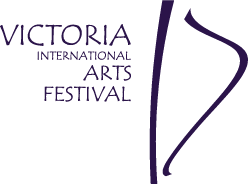A stunning performance by the Sakyr …
Performing on Sunday evening to a packed audience in the Aula Mgr G. Farrugia, Sakyr Piano Quartet, comprised of Santa-Monica Mihalache (Violin), Barbora Veisová (Viola), Šimon Veis (Violoncello) and Marko Hilpo (Pianoforte), gave a stunning performance of two major quartets by Mozart and Richard Strauss.
This Quartet of very young musicians can compete with the best of them an the heights they reached, both musically and interpretatively, displayed what utterly consummate and professional performers they are. Formidable soloists in their own right, together they make a most accomplished ensemble, one that we would need to pay a lot of money to hear perform beyond our shores.
Starting with the lovely Quartet in G Minor by Mozart, Sakyr immediately plunged into the teasing runs and playfulness that one normally associates with a Mozart work, a sense of gossamer veneer, as it were, that belies the devilish stylistic difficulty that the work is generally always endowed with. Cast in the composer’s most dramatic key, the work (like its companion, the Piano Quartet in E flat, K. 493) certainly goes far beyond the conventional domestic character of similar chamber works, its dark, romantic sonorities enhanced by a true chamber music equality of part-writing that emphasizes the lower strings. This was superbly tackled by the Barbora on the viola and her brother Simon on the cello. The first violin, Santa-Monica, soared and peaked when required while the pianist (Marko Hilpo) proved to be such a superb performer throughout. In fact, the writing for the piano skilfully juxtaposes passages of concerto-like virtuosity with others in which the instrument fades and blends into the texture of the strings.
The Quartet is in three movements, the first a powerful Allegro that contrasts stormy drama with more lyrical introspection. This unsettled mood carries through into the central Andante, while even the final movement, a Rondo, fails to bring the light-hearted relief generally expected from such movements. The performance was throughout typified by technical assurance and a strong sense of style which did not waver for a single second.
After a very short break, the Quartet then engaged in one of the repertoire’s most difficult works, namely, Richard Strauss’ Quartet in C Minor op. 13. Although a very early work by the composer, it is evident that this is the Strauss one recognizes and whose imprint was solidly forged so early on in his compositional output. A massive work, around 40 minutes’ duration, this was one performance that will not be easily forgotten. The writing is symphonic in scope and breadth and the technical difficulties offered can be insurmountable to lesser mortals. The pianist had to deal with a hyperbolic million notes, which he tackled with mastery, refinement and ease.
There is something intrinsically ironic with Richard Strauss, even in his more sombre and sedate moments, a quality he seems to share with his French contemporaries. The Quartet was fully aware of this and this is what marked their performance as a very intelligent one.
The quiet opening of the Allegro is deceiving, for the music will quickly explode in a shower of energy, and that sharp contrast may be a key to this sonata-form movement: moments marked con espressione or tranquillo will instantly give way to superheated passages marked molto appassionatoor agitato. This opening movement is the most Brahmsian in the Quartet, as it were, particularly for its dark sonority, its development of small thematic motifs, and its dramatic scope evidenced in the multi-layered texture that works like a metaphysical conceit in literature – the more layers one uncovers the more meaning becomes obscured rather than revealed. The movement drove on relentlessly to a close that is virtually symphonic in conception and sound.
The Scherzo, marked Presto, is full of quick-silvery motion and a great deal of energy, especially in the pounding octave drops that recur throughout. A flowing Trio section leads to a return of the opening material, and Strauss recalls a bit of this Trio before the movement whips to its Prestissimo close. After two such powerful movements, the Andante brings a measure of calm. The piano’s lovely opening idea gives way to the viola’s lyric second subject, and Strauss extends these two themes gracefully. This movement came across as pregnant with feeling to a point that became almost unbearable, particularly when the strings played in wonderful sonority unison accompanied by massive octaves on the piano. Emotionally, this reached breaking point.
The concluding Vivace returned to the mood and manner of the opening movement. Its fiery beginning, full of sharp edges and syncopated rhythms, led to the violoncello’s calm second theme (molto con espressione, specifies Strauss), and these two ideas were developed at length, and with a great deal of virtuosity, before the music hammers its way to the conclusion on a firm C-minor chord.
This was both a refreshing and a most demanding concert, for the audience, I mean. A truly wonderful experience and we look forward to welcoming Sakyr again in the very near future!




